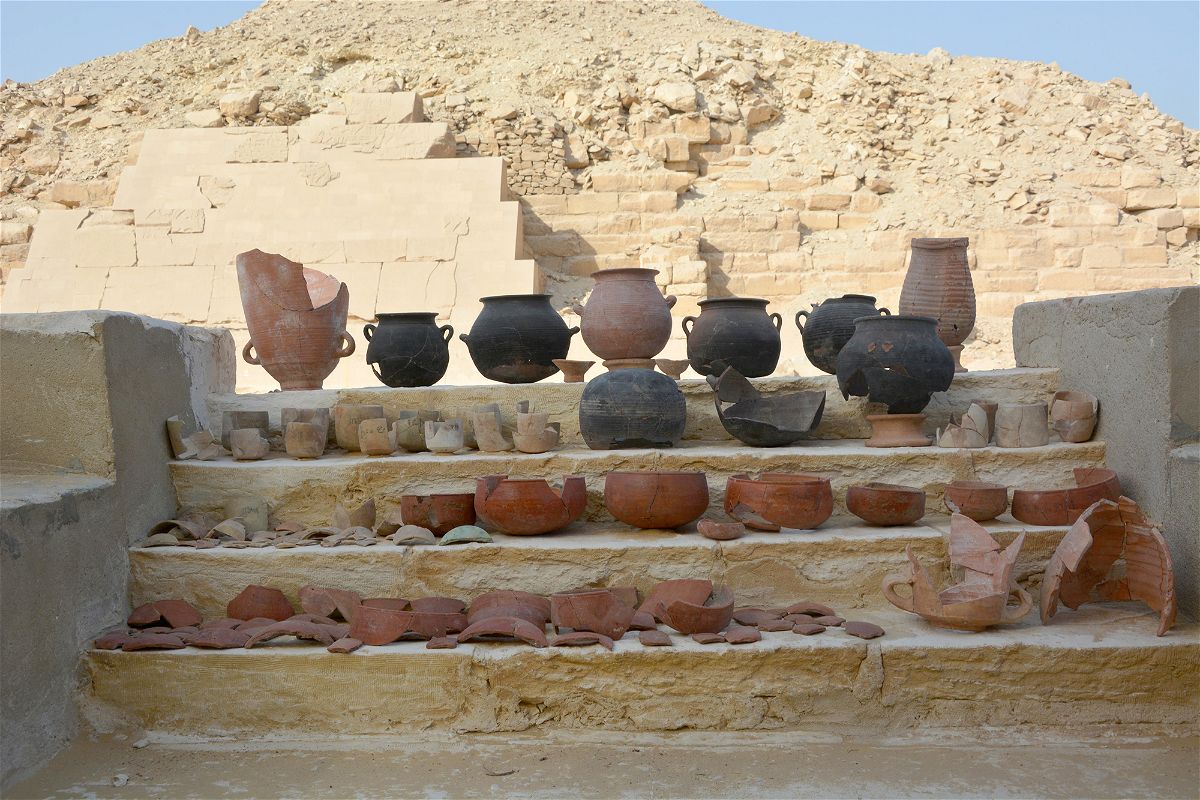Discovery of embalming workshop reveals how ancient Egyptians mummified the dead

The scientists analyzed residues found on vessels unearthed from the embalming workshop.
By Katie Hunt, CNN
From the ruins of an embalming workshop, scientists have discovered the substances and concoctions ancient Egyptians used to mummify the dead.
While scholars had previously learned the names of substances used to embalm the dead from Egyptian texts, they were — until recently — only able to guess at exactly what compounds and materials they referred to. Now, molecular analysis of residues in pots excavated from a site discovered in 2016 in Saqqara, an ancient burial ground, has revealed some answers.
A total of 121 vessels were recovered from the subterranean embalming workshop, which was used in the seventh and sixth century BC. In research published Wednesday in the scientific journal Nature, the scientists based in Germany and Egypt studied organic residues in 31 of the pots that were most clearly labeled.
They revealed ancient Egyptians used a wide variety of substances to anoint the body after death, to reduce unpleasant smells and protect it from fungi, bacteria and putrefaction. Materials identified include plant oils such as juniper, cypress and cedar as well as resins including from pistachio trees, animal fat and beeswax.
Archaeologists were also able to determine which particular substances were used to preserve different body parts. (Pistachio resin and castor oil, for example, were used only for the head.)
“I was fascinated by this chemical knowledge,” Philipp Stockhammer, a professor of prehistoric archaeology of the eastern Mediterranean at Ludwig Maximilian University in Munich and coauthor of the research, said in a news briefing.
“They… knew what substances they needed to put on the skin — antibacterial, antifungal substances — to keep the skin best possibly preserved without having any microbiological background, without even knowing about bacteria. This enormous knowledge was accumulated over centuries.”
The findings also included that the substance referred to by the ancient Egyptians as “antiu,” and has been translated as myrrh or incense, was a mix of a number of different ingredients: a blend of cedar oil, juniper and cypress oil and animal fats.
Coauthor Susanne Beck, a researcher in the Department of Egyptology and the curator of the Egyptian Collection at the University of Tübingen in Germany, noted that it is hard to know how universally the substances found at the Saqqara site were used, however, because very few embalming workshops have been discovered.
The ingredients used in the workshop were varied and sourced not just from Egypt, but much further afield. While many of the substances were from across the Mediterranean, they also found residues of dammar gum and elemi resin, which likely came from the forests of southeast Asia, or possibly tropical regions of Africa.
This, the researchers said, revealed the long-distance exchange of goods — though more work needed to be done to understand the exact properties of these substances and why they were sourced from so far away.
“These resins provide fresh evidence for long-distance trade networks, and raise the question of how and when the Egyptians learnt of these resins and obtained a specialized understanding of their properties and relevance to mummification,” said Salima Ikram, a distinguished professor of Egyptology at The American University in Cairo, in a commentary on the study.
Ikram, who wasn’t involved in the research, said that Egyptians artificially preserved the corpses of humans and animals with the goal of providing a permanent home for their souls. The mummification process, along with associated rituals, usually took around 70 days and was thought to transform the deceased from an earthly to a divine being.
The-CNN-Wire
™ & © 2023 Cable News Network, Inc., a Warner Bros. Discovery Company. All rights reserved.



